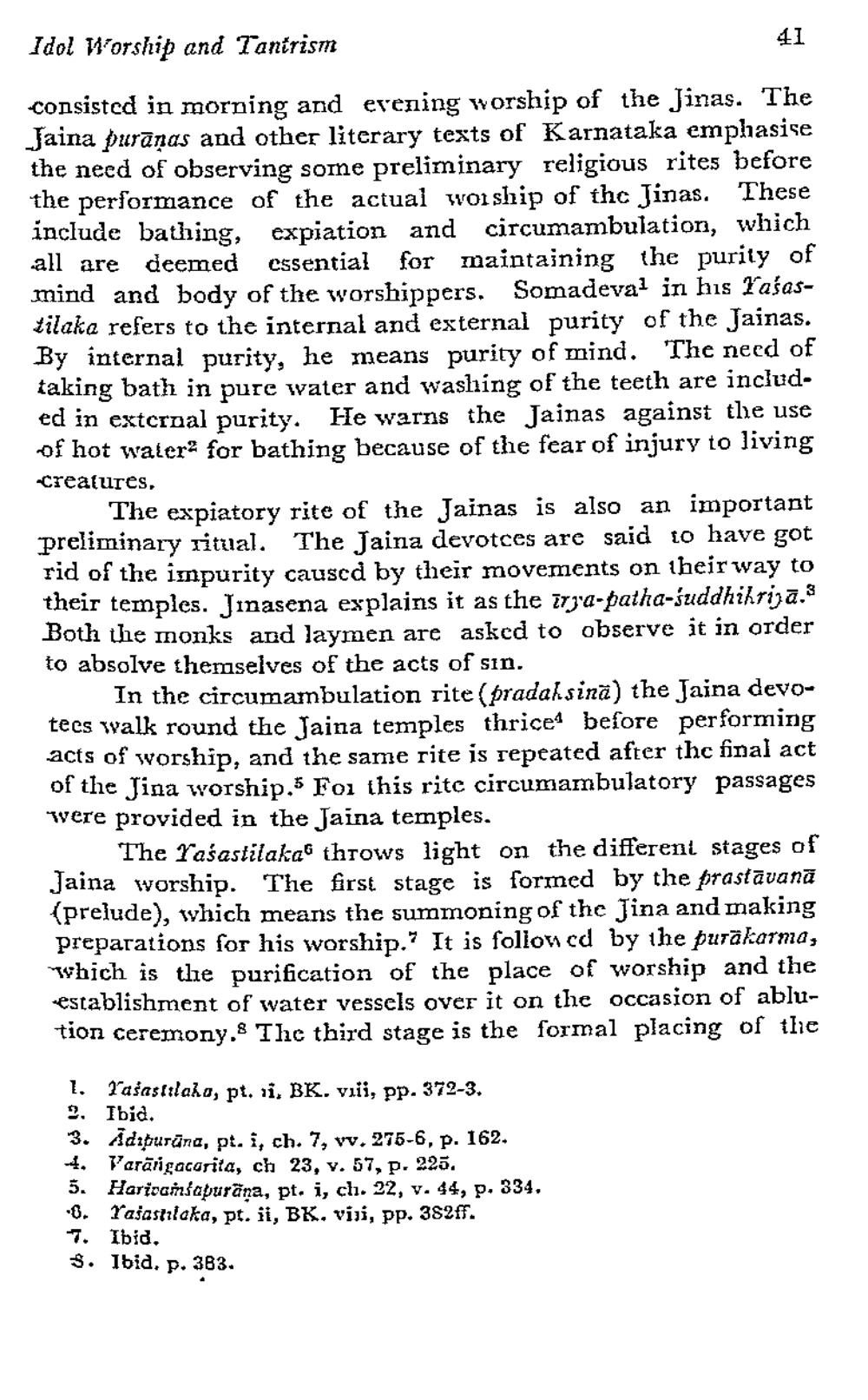________________
Idol Worship and Tantrism
These
all are
consisted in morning and evening worship of the Jinas. The Jaina puranas and other literary texts of Karnataka emphasise the need of observing some preliminary religious rites before the performance of the actual worship of the Jinas. include bathing, expiation and circumambulation, which deemed essential for maintaining the purity of mind and body of the worshippers. Somadeval in his Yasastilaka refers to the internal and external purity of the Jainas. By internal purity, he means purity of mind. The need of taking bath in pure water and washing of the teeth are included in external purity. He warns the Jainas against the use of hot water for bathing because of the fear of injury to living
creatures,
41
The expiatory rite of the Jainas is also an important preliminary ritual. The Jaina devotces are said to have got rid of the impurity caused by their movements on their way to their temples. Jmnasena explains it as the irya-patha-śuddhikrijā.3 Both the monks and laymen are asked to observe it in order to absolve themselves of the acts of sin.
In the circumambulation rite (pradaksina) the Jaina devotees walk round the Jaina temples thrice before performing acts of worship, and the same rite is repeated after the final act of the Jina worship. For this rite circumambulatory passages were provided in the Jaina temples.
The Yasastilaka throws light on the different stages of Jaina worship. The first stage is formed by the prastāvanā (prelude), which means the summoning of the Jina and making preparations for his worship." It is followed by the puräkarma, which is the purification of the place of worship and the establishment of water vessels over it on the occasion of ablution ceremony. The third stage is the formal placing of the
1. Yasastilaha, pt. 11, BK. viii, pp. 372-3. 2. Ibid.
3. Adipurana, pt. i, ch. 7, vv. 275-6, p. 162.
4. Varangacarita, ch 23, v. 57, p. 225.
5. Harivamsapurāṇa, pt. i, ch. 22, v. 44, p. 334. 6. Yasastilaka, pt. ii, BK. vii, pp. 382ff. 7. Ibid.
S. Ibid. p. 383.




